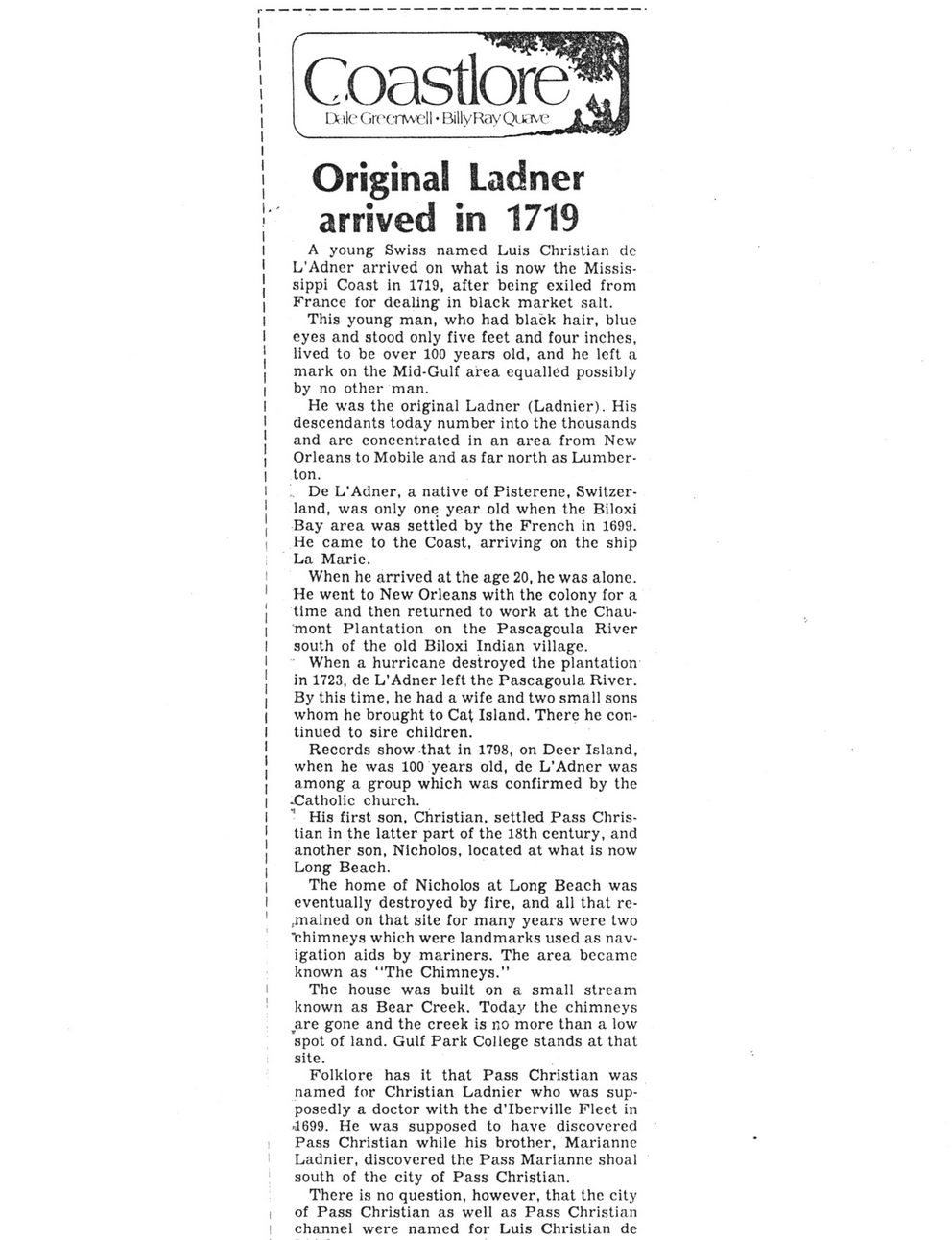This text was obtained via automated optical character recognition.
It has not been edited and may therefore contain several errors.
Original Ladner arrived in 1719 A young Swiss named Luis Christian do L'Adner arrived on what is now the Mississippi Coast in 1719, after being exiled from France for dealing in black market salt. This young man, who had black hair, blue eyes and stood only five feet and four inches, lived to be over 100 years old, and he left a mark on the Mid-Gulf area equalled possibly by no other man. He was the original Ladner (Ladnier). His descendants today number into the thousands and are concentrated in an area from New Orleans to Mobile and as far north as Lumber-ton. _ De L?Adner, a native of Pisterene, Switzerland, was only one year old when the Biloxi Bay area was settied by the French in 1699. He came to the Coast, arriving on the ship La Marie. When he arrived at the age 20, he was alone. He went to New Orleans with the colony for a time and then returned to work at the Chau-mont Plantation on the Pascagoula River south of the old Biloxi Indian village. When a hurricane destroyed the plantation in 1723, de L?Adner left the Pascagoula River. By this time, he had a wife and two small sons whom he brought to Cat Island. There he continued to sire children. Records show that in 1798, on Deer Island, when he was 100 years old, de L?Adner was among a group which was confirmed by the -Catholic church. 1 His first son, Christian, settled Pass Christian in the latter part of the 18th century, and another son, Nicholos, located at what is now Long Beach. The home of Nicholos at Long Beach was eventually destroyed by fire, and all that re-.mained on that site for many years were two ?fchimneys which were landmarks used as navigation aids by mariners. The area became known as ?The Chimneys." I The house was built on a small stream 1 known as Bear Creek. Today the chimneys rare gone and the creek is no more than a low spot of land. Gulf Park College stands at that site. Folklore has it that Pass Christian was named for Christian Ladnier who was supposedly a doctor with the d?Iberville Fleet in 4699. He was supposed to have discovered i Pass Christian while his brother, Marianne Ladnier, discovered the Pass Marianne shoal ' south of the city of Pass Christian. There is no question, however, that the city i of Pass Christian as well as Pass Christian I channel were named for Luis Christian de

Chadwick 017